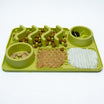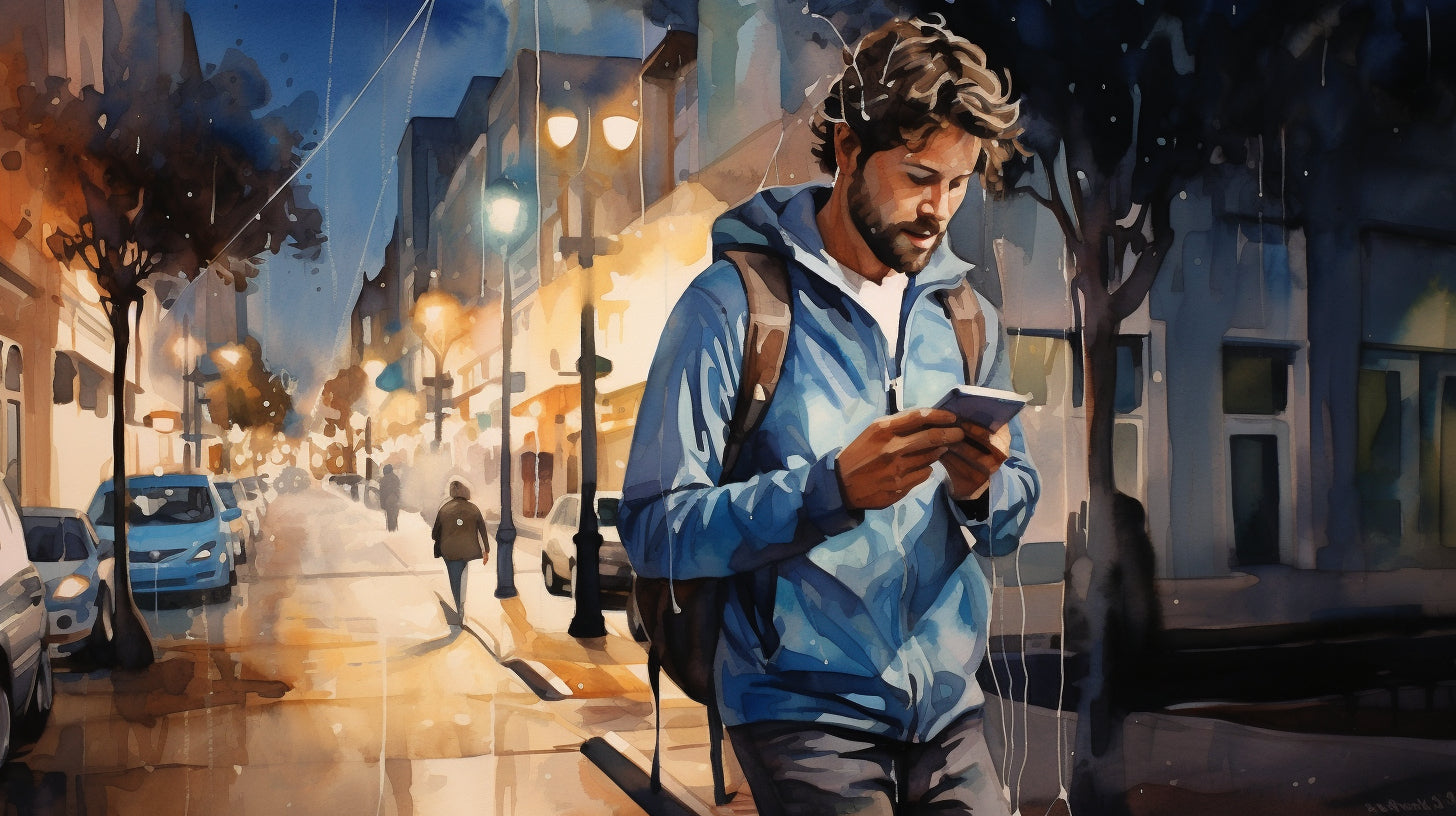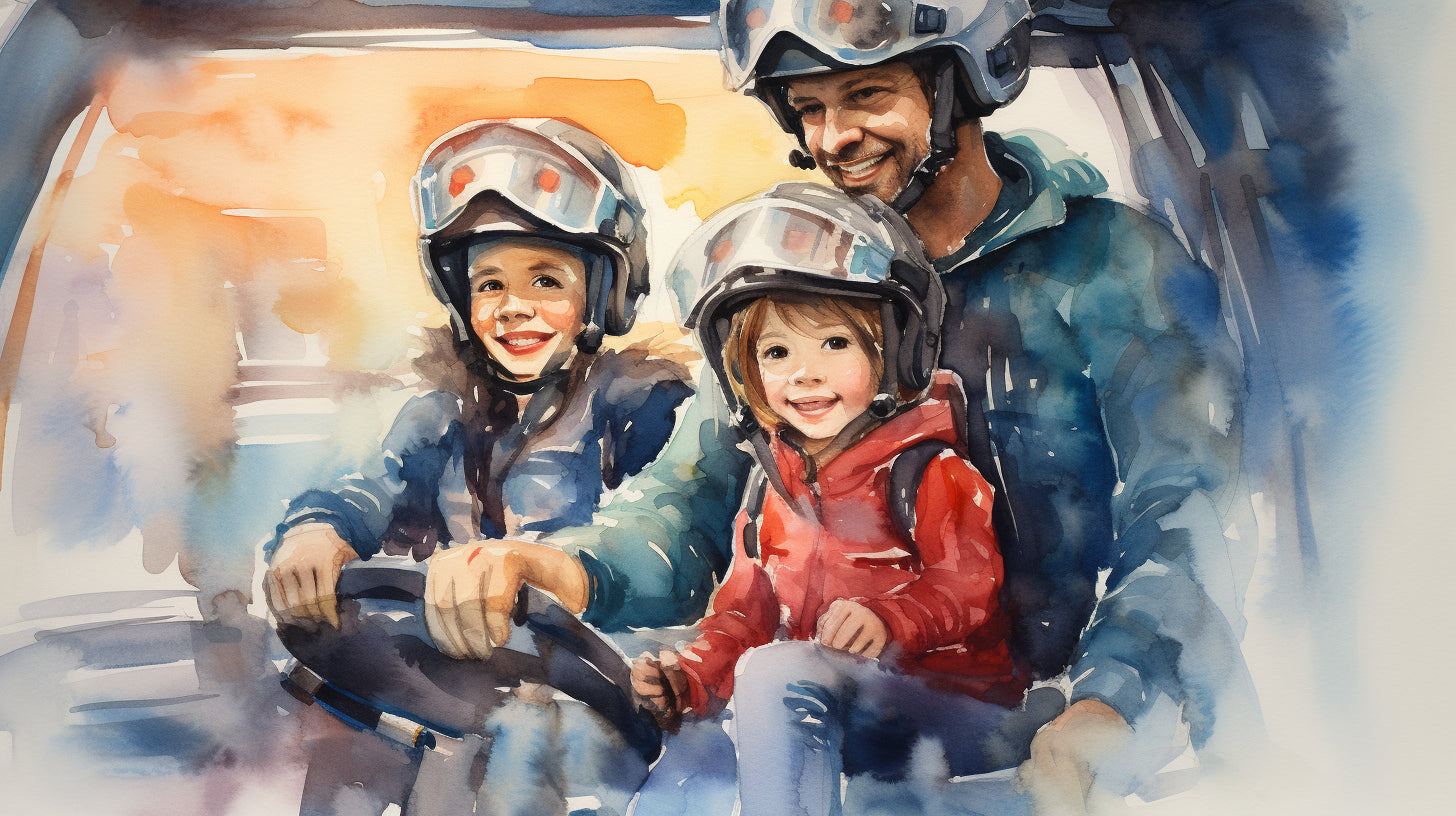Home Safety
When it comes to personal safety, your home should be your fortress - a place where you feel safe and secure. To ensure that your home is protected from intruders and potential hazards, here are some practical tips for home safety:
Securing Doors and Windows
- Install sturdy deadbolt locks on all exterior doors. These locks provide an extra layer of security and make it harder for intruders to break in.
- Reinforce windows with shatterproof glass or security film. This makes it more difficult for someone to smash the glass and gain access to your home.
- Consider installing window bars or grills on ground-level windows, especially if you live in a high-crime area.
Installing a Security System
- Invest in a reliable security system that includes burglar alarms, motion sensors, and surveillance cameras. These systems act as a deterrent and provide round-the-clock monitoring for any suspicious activity.
- Place visible signage indicating that your home is protected by a security system. This alone can discourage potential burglars from targeting your property.
- Connect your security system to a monitoring service that can alert the authorities in case of an emergency.
Practicing Safe Habits
- Always lock your doors and windows, even when you're at home. This simple habit can significantly reduce the risk of a break-in.
- Keep your property well-lit, both indoors and outdoors. Install motion-sensor lights outside your home to deter intruders.
- Don't advertise your absence. If you're going on vacation, ask a trusted neighbor or friend to collect your mail, park a car in your driveway, and keep an eye on your property.
Remember, home safety is a combination of physical measures and personal habits. By taking these simple precautions, you can create a secure environment for you and your family.
Personal Safety on the Streets
When it comes to personal safety, being aware of your surroundings and taking precautions is essential, especially when you're out on the streets. Whether you're walking to work, running errands, or simply enjoying a leisurely stroll, here are some practical tips to help you stay safe:
Being Aware of Your Surroundings
One of the most important things you can do to enhance your personal safety on the streets is to stay alert and aware of your surroundings. This means avoiding distractions such as being engrossed in your phone or wearing headphones that prevent you from hearing what's happening around you. By staying attentive, you can quickly identify potential threats and take action if necessary.
Walking with Confidence
Confidence is key when it comes to personal safety. Walk with purpose and maintain good posture as it sends a clear message to potential attackers that you are aware and not an easy target. Make eye contact with people you pass by, which lets them know you're aware of their presence and can potentially deter any ill-intentioned individuals.
Avoiding Unsafe Areas
To minimize the risk of encountering dangerous situations, it's important to be familiar with your surroundings and avoid areas that are known for criminal activity, especially during late hours. Stick to well-lit and populated areas, and trust your instincts. If a particular street or neighborhood feels unsafe, don't hesitate to take an alternate route or call for a ride.
Remember, personal safety on the streets is mostly about prevention and risk assessment. By being cautious and proactive, you can greatly reduce the chances of being targeted or finding yourself in a dangerous situation.
"The best way to stay safe on the streets is to be proactive and alert. Stay mindful of your surroundings, walk confidently, and avoid areas that make you feel uncomfortable. These simple yet effective tips can make a significant difference in ensuring your personal safety."
Travel Safety
Traveling can be an exciting and enriching experience, but it's important to prioritize your personal safety while exploring new destinations. Whether you're embarking on a solo adventure or traveling with friends or family, taking precautions can help keep you safe and ensure a smooth journey. Here are some practical tips for staying safe while traveling:
Researching Destinations
Before you even set foot in a new city or country, it's crucial to do your research. Familiarize yourself with the local customs, laws, and potential safety risks of your chosen destination. Here are a few things to consider:
- Check travel advisories: Stay updated on any travel advisories or warnings issued by your government or trusted travel resources. These alerts can provide valuable information about security concerns in specific areas.
- Read reviews: Research hotels, restaurants, and attractions to ensure they have positive reviews and are located in safe areas. Reading reviews from fellow travelers can give you insights into potential safety concerns.
- Learn about local customs: Ensure you're aware of cultural nuances and etiquette in your destination. This can help you avoid awkward or potentially dangerous situations.
Keeping Valuables Secure
While traveling, it's important to keep your valuables safe to protect against theft or loss. Here are a few tips to keep in mind:
- Use a hidden money belt: Carry your essential documents, cash, and cards in a discreet and secure money belt that can be worn under your clothing. This reduces the risk of pickpocketing.
- Divide your money: Avoid keeping all your cash in one place. Divide your money and store it in different pockets, bags, or locations.
- Lock your bags: Invest in a sturdy padlock or combination lock to secure your luggage. This can deter opportunistic thieves and add an extra layer of protection.
Using Transportation Safely
Getting around in a new place can be exciting, but it's important to prioritize your safety when using transportation. Here are a few tips to keep in mind:
- Choose reputable transportation options: Opt for licensed taxis, reputable ride-sharing services, or public transportation systems that are known for their safety standards. Avoid unmarked or unofficial vehicles.
- Be aware of your surroundings: Pay attention to your surroundings when waiting for public transportation or navigating busy transportation hubs. Be cautious of anyone who appears suspicious or overly interested in your belongings.
- Keep your personal belongings close: When using public transportation, ensure that your bags and personal belongings are within sight and reach at all times. Avoid displaying expensive items or valuable jewelry that may attract unwanted attention.
Being prepared and proactive about your personal safety while traveling can make a significant difference in your overall experience. Remember to trust your instincts, stay aware of your surroundings, and take the necessary precautions to keep yourself safe. By doing so, you can fully enjoy your travel adventures while ensuring your well-being.
Digital Safety
In today's digital age, it's important to prioritize your safety not just in the physical world, but also in the digital realm. With cybercrime on the rise, it's essential to take the necessary precautions to protect your personal information and online activities. Here are some practical tips for ensuring your digital safety:
Creating Strong and Unique Passwords
One of the simplest yet most effective ways to enhance your digital safety is by creating strong and unique passwords. Here's what you can do:
- Avoid common passwords like "123456" or "password." These are the first ones hackers will try.
- Use a mix of characters. Include a combination of uppercase and lowercase letters, numbers, and symbols.
- Make it lengthy. The longer your password, the harder it is for hackers to crack.
- Don't reuse passwords. Each account should have its own unique password. Consider using a password manager to help you keep track of them.
"A strong password is your first line of defense against unauthorized access to your online accounts." - Anonymous
Protecting Personal Information
Your personal information is highly valuable to cybercriminals, and safeguarding it should be a top priority. Here are a few steps you can take to protect your personal data:
- Be cautious with sharing personal information online. Only provide sensitive information on secure websites and avoid sharing it on social media platforms.
- Enable two-factor authentication (2FA). This adds an extra layer of security by requiring a second verification step, such as a code sent to your phone, in addition to your password.
- Regularly update your software and apps. Software updates often contain security patches that protect against the latest threats.
- Use encryption for sensitive data. Whenever possible, encrypt your files and emails to ensure that only authorized individuals can access them.
"Your personal information is like your digital fingerprint. Guard it carefully." - Anonymous
Being Cautious with Online Interactions
Interacting with others online can sometimes expose you to potential risks. Here are a few guidelines to follow:
- Be mindful of what you share on social media. Avoid posting sensitive information such as your full address, phone number, or birth date.
- Think before you click. Be wary of emails, messages, or links from unknown sources, as they may contain phishing attempts or malware.
- Verify the authenticity of websites. Before entering any personal information or making online transactions, ensure the website is secure by checking for a padlock symbol in the browser address bar.
- Educate yourself about online scams. Stay informed about the latest scams, such as phishing emails, lottery scams, or romance scams, so you can recognize and avoid them.
"In the digital world, an ounce of caution is worth a pound of protection." - Anonymous
By implementing these digital safety measures, you can greatly reduce the risk of falling victim to cybercrime and protect your personal information online. Remember, it's always better to be proactive in ensuring your digital safety than dealing with the consequences of a security breach. Stay safe!
Safety in Public Spaces
When it comes to personal safety, it’s essential to be cautious and prepared, especially in public spaces where the risk of encountering unfamiliar people or potentially dangerous situations is higher. Whether you're running errands or enjoying a night out, here are some practical tips to help you stay safe in public spaces.
Using ATMs and Handling Money
- Be aware of your surroundings: Before using an ATM, take a quick scan of your surroundings and make sure the area is well-lit and free from any suspicious individuals. If something feels off, trust your instincts and find another ATM.
- Avoid counting money in public: After withdrawing cash from an ATM, resist the temptation to count your money in plain sight. This can attract unwanted attention from potential thieves.
- Secure your belongings: Keep your wallet, purse, or bag close to your body, preferably in a zipped or buttoned compartment. Avoid leaving your belongings unattended or in the seat next to you, especially in crowded places.
Protecting Belongings in Crowded Areas
- Stay vigilant in crowded areas: During events or in crowded places such as malls or public transportation, always keep an eye on your belongings. Pickpockets often take advantage of crowded spaces where it's easy to blend in and go unnoticed.
- Use secure bags or backpacks: Choose bags or backpacks with anti-theft features such as slash-proof material, locking zippers, or hidden compartments. These can deter thieves and provide an extra layer of protection for your valuables.
- Avoid displaying expensive items: If you're carrying valuable items like smartphones, jewelry, or expensive cameras, try to keep them out of sight as much as possible. Displaying these items can make you a target for theft.
Dealing with Strangers or Suspicious Situations
- Trust your instincts: If someone or something feels off, trust your gut feeling and maintain a safe distance. Your intuition is a powerful tool for identifying potential threats.
- Travel in groups: There's safety in numbers. When possible, travel with friends or family to minimize the risk of being targeted by criminals.
- Be assertive and confident: Criminals often target those who appear vulnerable or easily intimidated. Walk with confidence, maintain good posture, and make eye contact with those around you to show that you are aware and not an easy target.
Remember, personal safety is a priority, and being prepared and alert in public spaces can significantly reduce the risks you may encounter. By implementing these practical tips, you can navigate public areas with confidence and protect yourself and your belongings from potential threats. Stay aware, stay safe!
Emergency Preparedness
Introduction
When it comes to personal safety, being prepared for emergencies is crucial. Emergencies can happen unexpectedly, and having a plan in place can make all the difference. In this section, we will discuss some practical tips for emergency preparedness to help you stay safe in various situations.
Creating a Safety Plan
One of the first steps in emergency preparedness is creating a safety plan. This plan should include:
- Identifying safe areas in your home or workplace where you can take shelter during emergencies, such as tornadoes or earthquakes.
- Discussing emergency evacuation routes and meeting points with your family or coworkers.
- Assigning responsibilities to each household member or colleague during an emergency, such as who will grab important documents or who will be responsible for the pets.
- Establishing a communication plan, including identifying a central contact person outside of your immediate area who can relay messages to your loved ones in case local infrastructure is down.
Knowing Basic First Aid
Having knowledge of basic first aid can be invaluable during emergencies. Whether you encounter a minor injury or are faced with a more serious situation, knowing how to administer immediate aid can help stabilize the situation until professional help arrives. Some essential first aid skills to learn include:
- CPR (cardiopulmonary resuscitation): This life-saving technique can help revive someone who has stopped breathing or whose heart has stopped.
- The Heimlich maneuver: Knowing how to perform the Heimlich maneuver can be crucial in preventing choking and clearing the airway.
- Treating wounds: Understanding how to dress wounds properly and control bleeding can prevent infections and aid in the healing process.
Preparing an Emergency Kit
Having an emergency kit ready can provide you with essential supplies during a crisis. Your emergency kit should include:
- Non-perishable food items and bottled water to sustain you and your family for at least three days.
- A first aid kit with basic medical supplies.
- Flashlights, batteries, and a battery-operated radio for communication and to stay informed about the situation.
- Extra clothing, blankets, and personal hygiene items.
- Important documents, such as identification cards, insurance papers, and emergency contact information.
Remember to periodically check and update your emergency kit to ensure that all supplies are in good condition and have not expired.
Conclusion
In times of emergencies, being prepared can help minimize the risks and ensure your safety and the safety of your loved ones. By creating a safety plan, learning basic first aid skills, and having an emergency kit available, you can face unforeseen situations with more confidence. Remember, emergency preparedness is an ongoing process, so stay informed and regularly review your plans and supplies. Stay safe, stay prepared!
Self-Defense Techniques
When it comes to personal safety, being prepared and having some self-defense techniques in your arsenal can provide you with peace of mind and confidence. While it's always best to avoid dangerous situations whenever possible, knowing how to protect yourself can be crucial in case of an emergency. Here are some practical self-defense techniques you can learn to help keep yourself safe:
1. Learning Self-Defense Moves
Learning self-defense moves can be empowering and provide you with the skills to handle potentially dangerous situations. There are various self-defense disciplines and techniques you can explore, such as:
- Krav Maga: Krav Maga is a self-defense system developed for military training that focuses on practical techniques for real-life situations. It combines elements of boxing, wrestling, martial arts, and street fighting.
- Brazilian Jiu-Jitsu: Brazilian Jiu-Jitsu is a martial art that focuses on ground fighting and submission holds. It emphasizes technique and leverage rather than relying on strength, making it suitable for people of all sizes and abilities.
- Taekwondo: Taekwondo is a Korean martial art that emphasizes fast kicks and dynamic movements. It can help improve your agility, flexibility, and self-discipline while teaching effective self-defense techniques.
- Kickboxing: Kickboxing combines elements of boxing and martial arts kicks. It is a high-intensity workout that can improve your cardiovascular fitness while teaching you powerful striking techniques.
Remember, consistency and practice are key when it comes to learning self-defense moves. Consider joining a local self-defense class or seeking guidance from a qualified instructor to ensure you're learning the techniques correctly and developing good form.
2. Using Personal Safety Devices
In addition to learning self-defense moves, carrying personal safety devices can provide an extra layer of protection. These devices are designed to deter potential attackers or give you a chance to escape safely. Some popular personal safety devices include:
- Pepper spray: Pepper spray is a non-lethal self-defense tool that can temporarily incapacitate an attacker by causing intense burning, irritation, and temporary blindness.
- Personal alarm: Personal alarms emit a loud noise when activated, attracting attention and potentially scaring off an attacker. They are small, portable, and can be easily carried in a purse or pocket.
- Tactical flashlight: Tactical flashlights are rugged and heavy-duty flashlights that can be used as a self-defense tool. They often have a strobe feature that can disorient an attacker or temporarily blind them.
- Personal safety app: There are various smartphone apps available that can help enhance your personal safety. These apps can send your location to trusted contacts, provide emergency services with your information, or even offer virtual escorts.
- Self-defense keychain: Self-defense keychains are small, discreet devices that combine the functionality of a keychain with a sharp, pointed edge for striking an attacker.
It's important to familiarize yourself with how to use these devices properly and responsibly. Take the time to read the instructions, practice using them, and ensure they are legal in your area.
3. Understanding Risk Assessment
One of the most important aspects of self-defense is understanding risk assessment. This involves being aware of your surroundings and identifying potential threats or dangerous situations. Here are some tips to help you assess and minimize risks:
- Maintain situational awareness: Stay alert and be aware of what's happening around you. Avoid distractions like headphones or excessive phone use when walking alone.
- Trust your intuition: If something feels off or makes you uncomfortable, trust your instincts. It's better to be safe than sorry.
- Avoid isolated or poorly lit areas: Stick to well-lit, populated areas whenever possible. Avoid taking shortcuts through secluded areas, especially at night.
- Travel in groups: When walking or commuting, try to travel with others. There is safety in numbers, and potential attackers are less likely to target a group.
- Have a plan: Consider different scenarios and plan how you would react. Having a plan in mind can help you respond more quickly and effectively in a high-stress situation.
Remember, self-defense is about empowerment and taking control of your own safety. By learning self-defense moves, carrying personal safety devices, and understanding risk assessment, you can increase your confidence and feel more prepared to handle any potential threats.
Conclusion
In conclusion, personal safety should be a priority for everyone. By following the practical tips and guidelines outlined in this article, you can significantly reduce your risk of becoming a victim of a crime or accident. Remember, staying prepared and staying safe is a continuous effort that requires awareness, caution, and proactive measures.
Here are some key takeaways:
- Home Safety: Secure your doors and windows, install a security system, and practice safe habits within your home to deter burglars and protect your loved ones and possessions.
- Personal Safety on the Streets: Be alert of your surroundings, walk with confidence, and avoid unsafe areas to minimize the risk of encountering dangerous situations while out and about.
- Travel Safety: Research your destinations, keep your valuables secure, and use transportation safely to ensure a smooth and safe travel experience.
- Digital Safety: Protect your online presence by creating strong and unique passwords, being cautious with personal information, and avoiding risky online interactions.
- Safety in Public Spaces: Take precautions when using ATMs, protect your belongings in crowded areas, and trust your instincts when dealing with strangers or suspicious situations.
- Emergency Preparedness: Create a safety plan, know basic first aid, and prepare an emergency kit to be ready for any unexpected situations.
- Self-Defense Techniques: Learn self-defense moves, carry personal safety devices, and understand risk assessment to empower yourself and increase your ability to protect yourself if necessary.
Personal safety is a combination of physical, emotional, and digital well-being. By implementing the tips provided in this article, you can enhance your personal safety and give yourself peace of mind knowing that you are taking proactive steps to keep yourself and your loved ones safe.
Remember, personal safety is not about living in fear, but rather about being prepared, aware, and empowered. Stay vigilant, trust your instincts, and make personal safety a priority in your daily life. Stay prepared and stay safe!
Frequently Asked Questions
-
What are some practical tips for personal safety?
Some practical tips for personal safety include: 1. Be aware of your surroundings, 2. Trust your instincts, 3. Avoid walking alone at night, 4. Keep your personal belongings secure, and 5. Learn basic self-defense techniques.
-
How can I stay safe while traveling?
To stay safe while traveling, it is advisable to: 1. Research your destination, 2. Keep important documents secure, 3. Inform someone about your itinerary, 4. Stay alert in crowded places, and 5. Use reputable transportation and accommodation services.
-
What should I do in case of an emergency?
In case of an emergency, remember to: 1. Stay calm and assess the situation, 2. Call emergency services immediately, 3. Follow their instructions, 4. Help others if possible, and 5. Be prepared with important emergency contacts.
-
How can I protect myself from online threats and scams?
To protect yourself from online threats and scams: 1. Use strong and unique passwords, 2. Be cautious of suspicious emails and links, 3. Keep your devices and software updated, 4. Use secure Wi-Fi networks, and 5. Avoid sharing personal information online.
-
What should I do if I feel unsafe in my neighborhood?
If you feel unsafe in your neighborhood: 1. Get to know your neighbors, 2. Install security measures like cameras and alarms, 3. Report any suspicious activities to the authorities, 4. Consider joining a neighborhood watch program, and 5. Take self-defense classes.




















Leave a comment
This site is protected by hCaptcha and the hCaptcha Privacy Policy and Terms of Service apply.